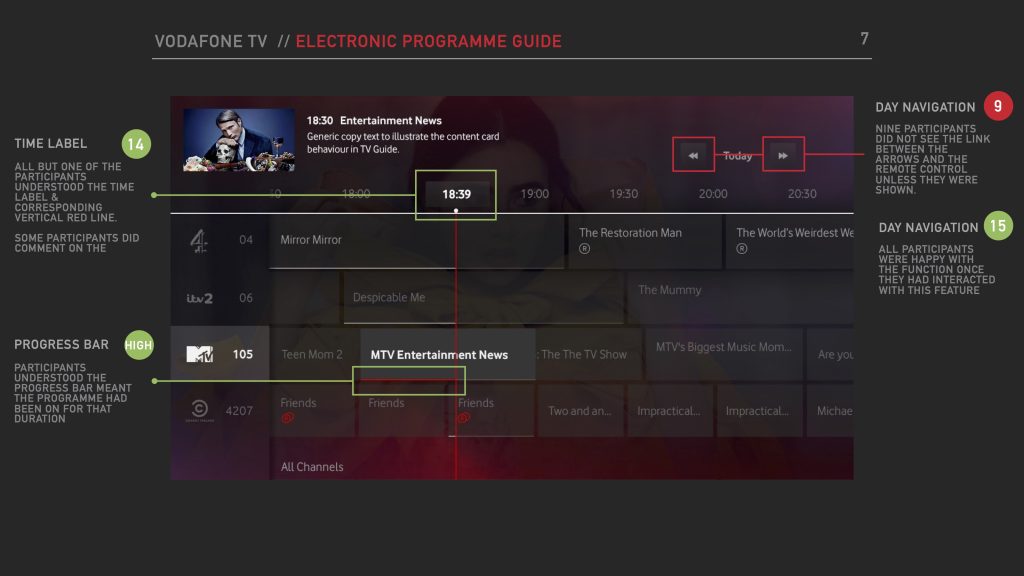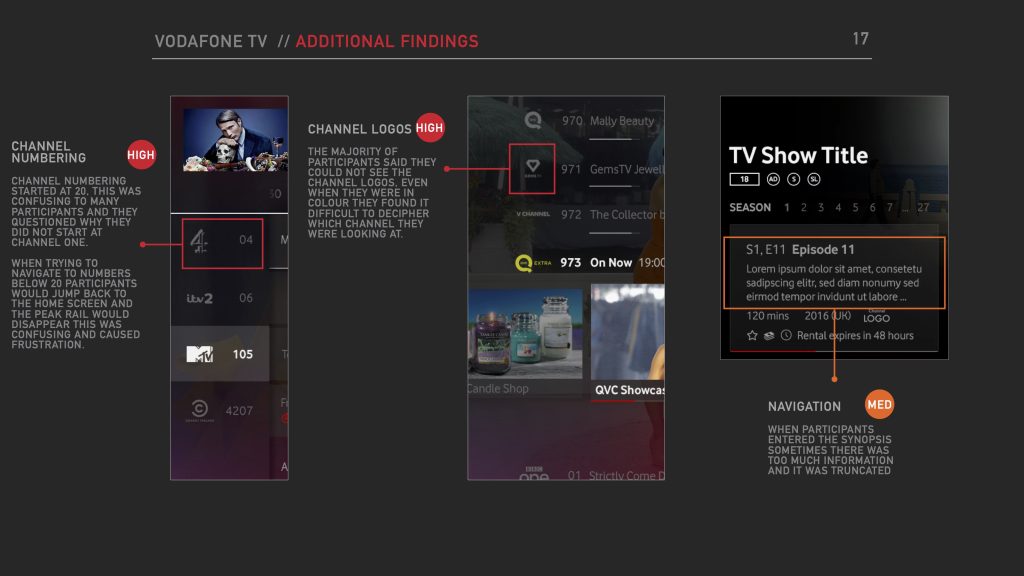
Vodafone had already made its mark in the TV and entertainment space across multiple countries, but its next move—launching in the UK’s highly competitive and saturated market—would be one of its biggest challenges yet. Unlike in previous markets, Vodafone wasn’t introducing a brand-new concept; it was entering a space dominated by well-established players with strong customer loyalty and deeply ingrained viewing habits.
Success wasn’t just about launching a functional product; it required a deep understanding of user behaviour, market demands, and technological constraints. Each market had its own regulations, content licensing restrictions, and unique consumer preferences, meaning a one-size-fits-all approach wouldn’t work.
I was brought in to lead the testing strategy, ensuring Vodafone had the insights needed to make the right product decisions. My role covered everything from analysing user behaviour in the UK and Spain to hardware testing the remote control and coordinating with suppliers for product improvements. It was critical to get things right from the start—failure to meet customer expectations from day one could push Vodafone’s new TV platform into obscurity.

Before any testing could begin, we needed to fully understand what made this market different. While Vodafone had successfully launched TV products in other countries, the UK and Spanish audiences had distinct viewing habits, content preferences, and technological expectations. A direct copy-and-paste approach wasn’t an option.
The UK was a mature, highly competitive market with strong on-demand streaming habits. Consumers expected seamless integrations with third-party services, advanced personalisation, and full control over their content. Meanwhile, Spain had a stronger preference for traditional broadcast content, with viewers relying more on linear TV and regional-specific programming.
Complicating matters further, broadcasters imposed strict digital rights management (DRM) policies, dictating how content could be streamed, downloaded, and even navigated within Vodafone’s platform. Some required Vodafone to use their proprietary video players, restricting the company’s ability to offer a fully unified experience.
The testing strategy had to account for these complexities—what worked for one country might be a deal-breaker for another.
With these challenges in mind, I implemented a multi-layered testing strategy designed to uncover user needs, technical limitations, and product gaps before launch. This involved gathering insights from real users, running controlled hardware tests, and analysing competitors’ approaches to ensure Vodafone’s offering was competitive.
User Testing in Spain & the UK
We conducted real-world testing with users in both countries, analysing how they interacted with the TV platform’s interface, remote control, and core features. These tests helped identify key usability pain points, including navigation difficulties, content discovery frustrations, and regional feature expectations.
Hardware Testing & Supplier Feedback
The remote control was a critical part of the experience, but early testing revealed issues. Latency problems, inconsistent button responsiveness, and minor design flaws all affected usability. By feeding detailed reports back to the supplier, we were able to refine the hardware before mass production, ensuring the remote felt premium and responsive.
Competitor & Market Analysis
To position Vodafone correctly, we analysed the strengths and weaknesses of Sky, Virgin, and other key players. Understanding how these competitors handled content aggregation, UI design, and regional licensing constraints helped shape Vodafone’s product roadmap.
Internal Testing Lab Planning
To future-proof the product, we developed plans for an internal testing lab, allowing Vodafone to continuously test and refine its digital TV experience post-launch. This ensured that testing wouldn’t just stop at launch, but become an integral part of ongoing product development.


One of the biggest hurdles in launching Vodafone’s TV platform was navigating the complex world of digital rights management (DRM). Unlike pure streaming services, Vodafone had to adhere to strict broadcaster rules, dictating exactly how content could be accessed, stored, and displayed.
Some broadcasters required Vodafone to use their proprietary video players, meaning we couldn’t offer a fully unified interface. Others restricted which content could be downloadable and how long users could store it.
These constraints heavily impacted UX decisions. While we wanted to offer users a seamless experience, licensing agreements forced Vodafone to make compromises, such as:
While frustrating, these challenges were non-negotiable, requiring a careful balance between compliance and user expectations.
Vodafone’s entry into the UK’s digital TV market required more than just a functional product—it required a deep understanding of market expectations, technical constraints, and business realities.
Key takeaways from this project included:
If you’re launching a new digital product, refining an existing service, or need a robust testing strategy, let’s chat.